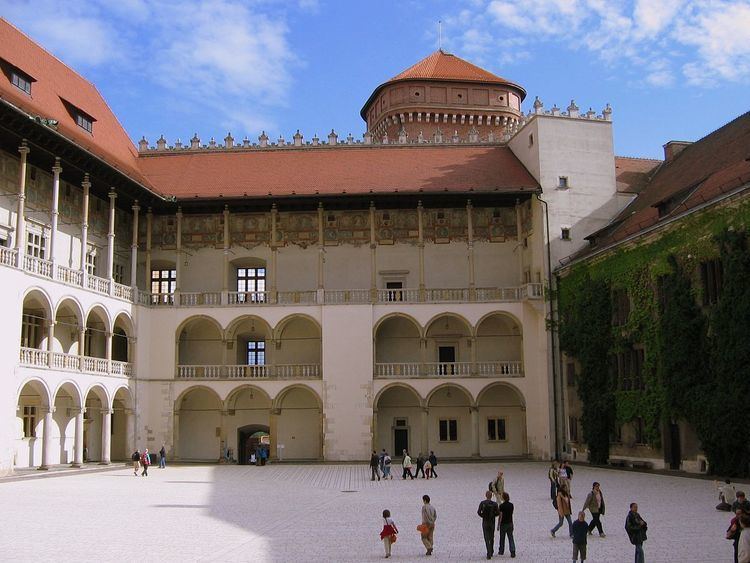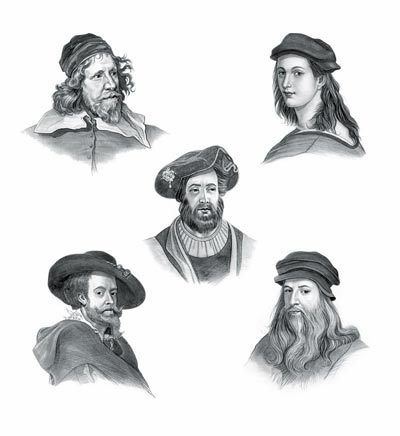Name Francesco Fiorentino Role Architect | Died 1516, Krakow, Poland | |
 | ||
People also search for Bartolommeo Berrecci, Benedykt from Sandomierz, Eberhard Rosemberger | ||
Francesco the "Florentine" was an Italian renaissance architect and sculptor from Florence, Italy. His date of birth is unknown. He died 16 October 1516 in Kraków.
Contents

Life
This Italian architect was the earliest representative of renaissance in Poland. There is no information about his life or his work before he came to Poland. Probably he appeared for the first time in Poland, Kraków in February 1502 for Prince Zygmunt’s request. Zygmunt I Stary (1 January 1467 – 1 April 1548) was the King of Poland (24 January 1507 – 1 April 1548) and Grand Duke of Lithuania (20 October 1506 – 1 April 1548) and was the main promoter of renaissance style in Poland. Prince Zygmunt offered him one-year service with 100 florins (gold coins from Florence) salary. Probably, Fiorentine arrived with prince Zygmunt from Hungary. From February, 1502 Francesco lived and worked in Kraków, Poland with exceptions for journeys to Buda (Budapest), Hungary in 1507 and 1510. Prince Zygmunt arrived from Hungary not only with Franscesco Fiorentino, but with whole architectural-sculptural team mainly composed from Florentines people. Prince set up a studio near to his residence, which was led by Fiorentine.
Works
The first work he undertook was rebuilding two wings of Wawel Castle (Royal Castle on Wawel), which was burned in 1500. At first he worked on the Western wing called ‘Queen’s House’ (1502-1507), which was intended for Elżbieta’s home – prince Zygmunt’s mother. It was the first stage of rebuilding in renaissance style of this residence. Remainder of this rebuilding are reliefly frames of windows on the second level from courtyard side. One of this reliefly frames is the setting of the bay window. Then he worked on the northern wing (1507–16). It is hard to describe scope of his works, but supposedly he is, among the other things, the author of decoration rocks – the frame of windows and bay window on the second floor of elevation from the courtyard in Western wing.
Fiorentine was the author of galleries enclosing large castle courtyard. It was the most important part (in artistic way) of rebuilding by this Italian man. Building started in 1507 and was continuing by Bartolomeo Berrecci (1480-1537) (Italian architect and sculptor from renaissance, who also worked for Zygmunt I Stary in Kraków) and after his death by his collaborators. This courtyard is considered as the most beautiful renaissance courtyard in the Middle Europe. The galleries, which made the main communication area of the building were used to representative and sociable goals. It also enabled royal people assisting in ceremonies and tournaments. The galleries were built on three levels and spread on wing walls of the castle. It has arcades on a first and second levels. It makes impression that it tidy up the courtyard in a spatial way and decorate it. Fiorentine, as a renaissance architect was deriving from Antic art, but in a freely way, so that architectural order is not in accordance with classical rules. In the highest level, each of the galleries is folding from two stems, which are put up one on the other and connected by knots, which never meet. It has triple function: connecting, crowning and bearing. Worth of comment are also jugs placed on a capitals. This rebuilding changed gothic castle into renaissance residence.
His great masterpiece is also Jan Olbracht’s (27 December 1459 – 17 June 1501, King of Poland 1492-1501) niche of tomb, which was founded by Elisabeth of Austria, who was polish Queen Elżbieta Rakuszanka (Habsburżanka) (1436-30 August 1505) – Queen of Poland (10 February 1454 - 7 June 1492) and Grand Duchess of Lithuania. She was daughter of Albrecht II Habsburg – King of Germany and Hungary and his wife Elizabeth of Luxembourg. She was married to Kazimierz IV Jagiellończyk (30 November 1427 – 7 June 1492) – Grand Duke of Lithuania (29 June 1440 – 7 June 1492) and King of Poland (25 June 1447 – 7 June 1492). Queen founded tomb after the death of her beloved son (1501). The co-founder was prince Zygmunt. Their contribution mark out border of style ages, which was important not only for Wawel, but for whole Kraków. Probably, after prince Zygmunt and Fiorentine arrived from Hungary, the tomb, with shape of Jan Olbracht’s was already done in gothic style by Stanislaw Stwosz (1478-1528) – sculptor and son of Wit Stwosz’s (1448-1533) also sculptor and painter. Later, this tomb was placed into the niche made by Fiorentine. Because of the wide of the tomb, the niche had to be made not so small. It had to be very deep, but also not so high. Eventually the niche was really wide, deep and heavy, so it needed even pilasters on the sides of heavily closure. Ornamentation of Jan Olbracht’s monument niche is richly decorated. Therefore, Fiorentine made architectural and sculptural frame for Jan Olbracht’s tomb in Wawel Cathedral (1501-05).
Francesco Fiorentino also made entrance portal to Bishop E. Ciolek’s palace on Kanoniczna 17 street in Krakow.
Style
Francesco was main designer and partly contractor of his masterpieces. His works are describing as ‘pure’ toscan renaissance. His realizations are also very precisie. It seems, some of his works are inspiration of foreign works. For example, the form of Jan Olbracht’s tomb is reminiscent of works by Bernardo Rosselino in the 15th century. The ornamental form is similar to the decoration of Palazzo Ducale in Urbino and the other connections in stone works from Hungary.
By composition and ornament details his works are obviously connected with the arts of Florence. His style and origin justified his nickname – Fiorentine.
After his death in 1516, works took over his successor – Bartolomeo Berrecci from Pontassieve, Italy, who was managing works until 1537, when he died. Francesco Fiorentine was (as well as Berrecci and many other artists from their country) outstanding creator and gathered around himself highly qualified workers. He was authority for many, because of his high court function and his masterpieces. He was representative of uniformly toscan renaissance style. Artistic works, which began after his death created Italian way of renaissance art in Poland.
His architectural and sculptural activity began development of renaissance art in Poland. His unfinished works were continued by the other Florentines, mainly by Bartolomeo Berrecci.
Probably he had a wife – Helena from Italy and son – sculptor Jan Fiorentine, who worked in his father’s team.
